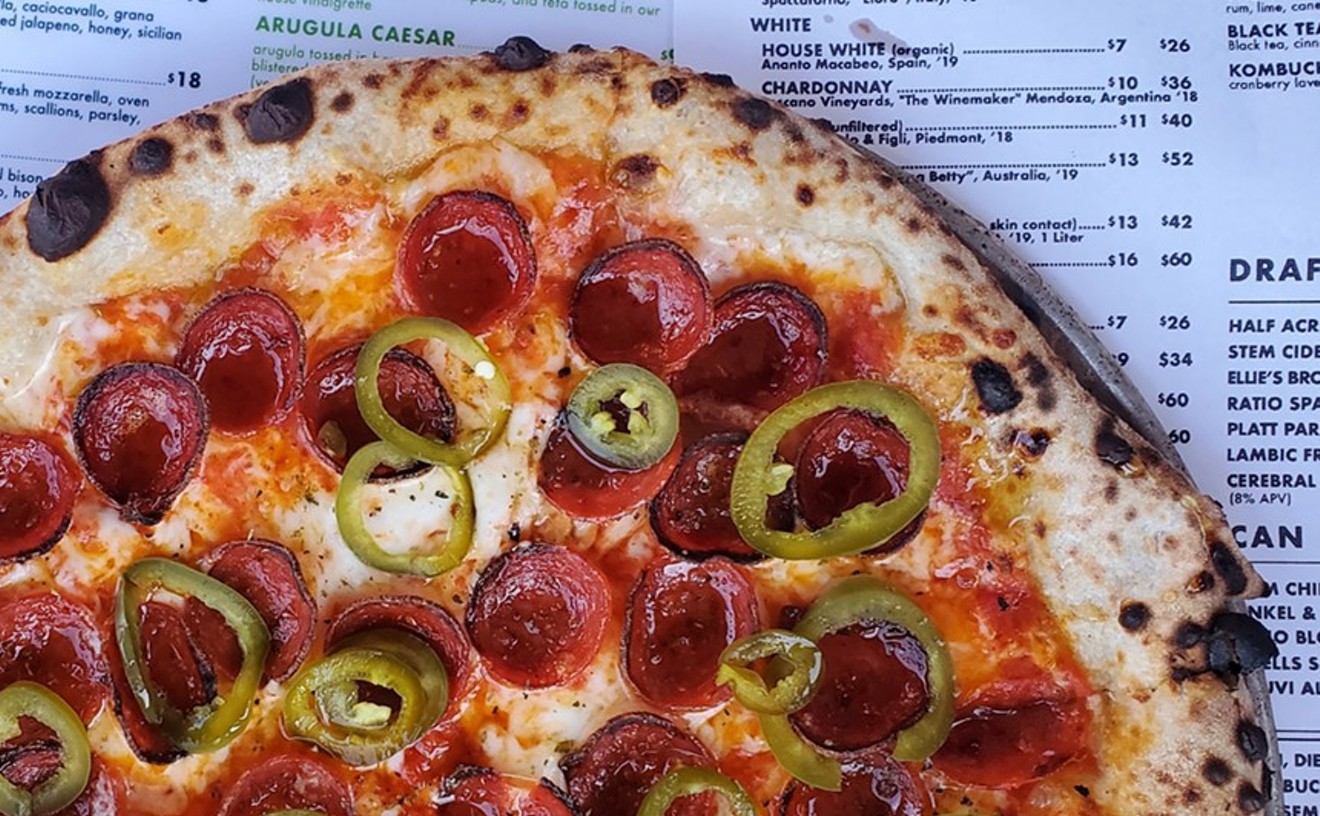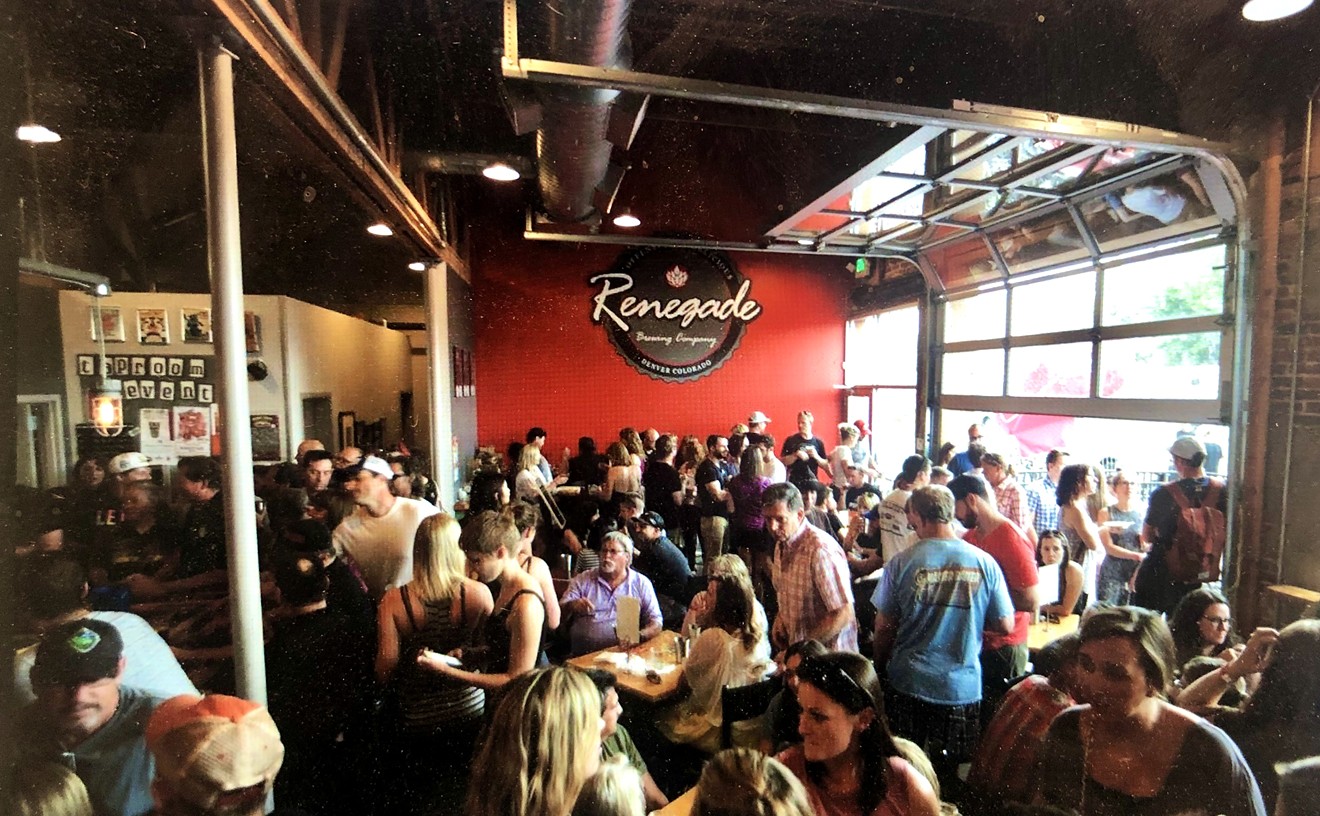Sometimes life jars you out of your routine into a realization that there's a whole world of social interaction and commerce that goes on without your input, your money or your involvement. In a city the size of Denver, shops, restaurants and businesses survive and even thrive despite not being the center of things -- at least, not your center. Feeling small is a little scary; some don't take it well. Opening up to something different or new means first acknowledging that there's something in the world you don't know much about, and that that something doesn't much care. But then, it only takes one step through the door and an honest "hello" to dispel anxiety. Trepidation gives way to curiosity, and curiosity vanquishes ignorance. It happened to me in what looked like an inconsequential strip mall off Havana Boulevard in front of Megenagna Ethiopian Restaurant and Grocery. It didn't take much effort; I just opened the door.
See also: Axum Restaurant -- an unexpected stop in Colfax's Ethiopian zone
I opened the door -- after first sitting in my car, trying to figure out which door to even walk through in this storefront at 306 South Ironton in Aurora. The sign above the grocery was large and explicit, but the windows were covered in diaphanous advertisements that let the light in but blocked the view from the sidewalk. The restaurant next door displayed a large sign in Amharic script only, with much smaller writing in English confirming that it was, in fact, the right restaurant. Its windows were also covered in larger-than-life photo banners of what turned out to be scenes of the interior.Amy and I were meeting our friend Jill, but we were early. I had an idea floating around in my head that I wanted to try cooking Ethiopian dishes at home, so we went into the market first. A bakery counter on the left and some shelves stocked with spices and canned goods on the right let me know I had chosen the right door. Many of the bags and tubs of spices lacked English labels, but I let my nose and eyes guide me: pre-mixed berbere the color of Colorado sandstone, black sesame seeds, blends of whole cinnamon, clove and cardamom pods with other ingredients I could only guess at. Next to those: sacks of dried lentils, cans of chick peas and fava beans, a cooler filled with sodas and fruit drinks.
As I picked up bags, inhaled, turned them in my hand to look for labels, the owner approached and asked if he could help us find anything. It turned out there was a missing ingredient for the dish I had in mind, but he said he could have it for me the next day. In addition to the grocery and restaurant, he also runs an injera bakery a few blocks away to provide stacks of the spongy flatbread for the restaurant and to fill the needs of Denver's Ethiopian community, which some estimates put as high as 50,000 residents. He was happy to hear that we would be dining in his restaurant and showed us to an open doorway between the grocery and dining room.
Jill met us inside the dining room, under one of the palm-leaf awnings that straddle a few of the tables, supported by bamboo posts. Heavy, rough-hewn chairs and a bamboo coffee bar added to the village ambiance of the charming little space. After delivering water, our server explained that there were no menus (although one can be found on the restaurant's website) and told us about the specialties of the house -- kitfo and tibs, listing off several varieties of each. Although most of what she listed by name sounded unfamiliar, her descriptions made everything clear. We made our choices and I also asked for a mixed vegetarian plate, but it turns out this was unnecessary, as a standard platter of sides came with our order. Keep reading for more of the Megenagna Ethiopian Restaurant. Tibs, the descriptor for grilled or sautéed meats, are generally cooked quickly and served dry -- almost like fajitas -- or sometimes finished in a sauce. Amy's order of derek tibs combined mild curls of jalapeño with seared beef cooked to well-done, while still tender and bursting with dry spice flavors and crispy bits of char. Jill and I both ordered kitfo; I went with the Gurage kitfo served raw with minced collard greens (gomen) and house-made, fine-grained cottage cheese (ayib) while Jill ordered the standard kitfo cooked rare.While kitfo originated with the Gurage people of southern Ethiopia, its popularity has spread and it is served in various forms through most of Ethiopia and at many Ethiopian restaurants in the U.S. Megenagna emphasizes on the Gurage origins, serving the minced beef mixed with chile-heavy mitmita spice and a dash of herbed clarified butter (niter kibbeh). The ayib cheese was divided into two mounds, one plain and one tinted yellow from yet another spice blend. Our server instructed us to dump the bowl of meat, cheese and greens onto a layer of injera so that each bite would contain a little of all of the ingredients.
It was fun sampling the raw and lightly cooked versions of the dish side by side. Brief contact with a hot pan brought out the roastier flavors of the spices and emphasized the rich, buttery niter kibbeh, but also took away from the smooth texture and mineral flavors of the raw beef. Sides of lentils, a chick-pea flour stew called shiro wot, and other cooked vegetables -- all served at room temperature -- helped cool and balance the fiery heat of the main dishes. Our server, doubling as barista, brought a final coffee -- pulled espresso-style and served in a tiny glass cup. When I returned the next day, I had another coffee (made by the same barista who recognized and greeted me kindly) while the owner wrapped up the ingredients I had come for. He seemed thrilled that I was willing to invest the time to attempt making my own injera and tibs. Even at 4 p.m., the place was bustling with both market and restaurant customers. Sitting and sipping my coffee, I realized that what was an adventure for me was simply everyday life for the Ethiopian immigrants and their children and grandchildren who have made Denver home. Walking into someplace unfamiliar may seem like an act of courage, but it's nothing compared to choosing or being forced by political upheaval and violence to find a new life and home in a foreign country. Despite my initial hesitation, I was welcomed with enthusiasm, hospitality and generosity.It's not brave to follow curiosity and sample the food of an ancient and complex culture; it's simply the act of becoming more human. The word "megenagna" translates roughly to "meeting place" -- an apt name for the hub of one culture's daily activities and a welcoming phrase for those of us willing to accept great food and unconditional hospitality.
For more from our tour of Denver's cultural, regional and international restaurant scene, check out our entire Ethniche archive.
Follow @CafeWestword











